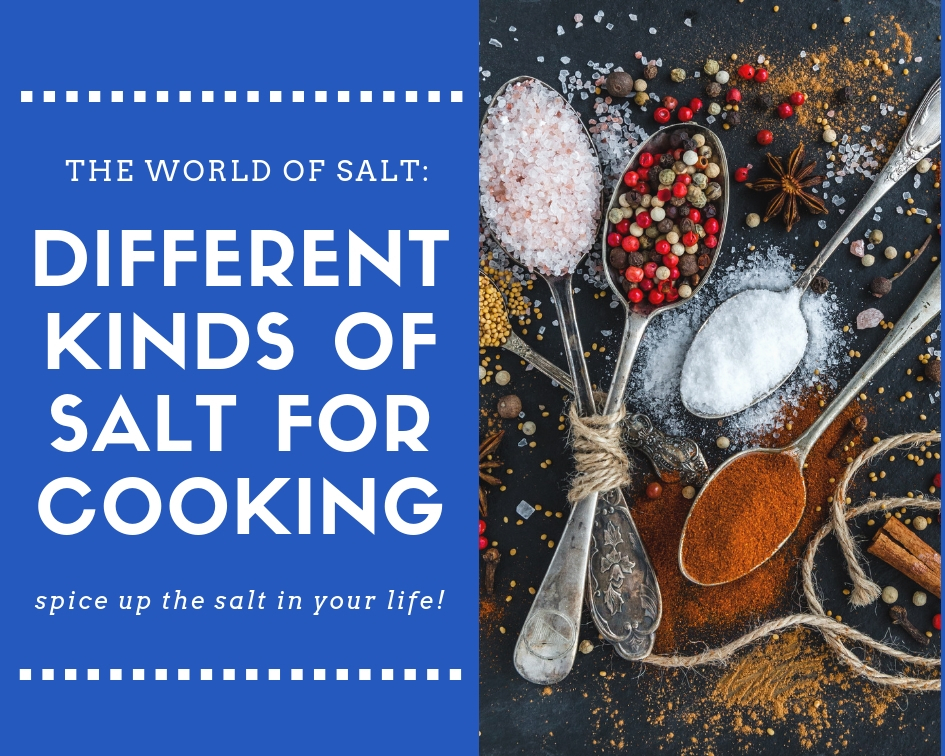There is a whole world out there you never even knew about, a world rich in salt! With the touch of a button, premium salts from all around the world can easily be purchased these days. They each have their unique nutrition properties, hue, flavor profile, and price tag. Here are some different types of salt to experiment with when cooking.
Table Salt
Table salt is highly refined to produce a finely ground product with no impurities. Often iodine is added to table salt to prevent an iodine deficiency. It also contains anti-caking agents to keep it from clumping.
Most recipes that use salt call for table salt. This is important because of all the types, table salt has the strongest salty flavor. Substituting might yield different results because other salts are not as “salty flavored.” If substituting a fine ground salt, like sea salt or Himalayan, the amount may need to be increased by 25% to compensate for the flavor.
Kosher Salt
Kosher salt is a flaky coarse ground salt. Kosher salt is not Kosher but instead used in the process required to make meats Kosher.
Sea Salt
Sea salt is typically unrefined and a coarser grind of salt harvested from evaporated seawater. Because it is unrefined, it contains trace minerals that are not in table salt. Sea salt is a broad term and there are many subtypes of sea salts.
- Celtic Sea Salt or Sel Gris ‘grey salt’: Harvested from the bottom of the tidal ponds off the coast of France.
- Fleur De Sel or ‘flower of salt’: Also harvested from the tidal ponds off the coast of France. However, this type of salt is skimmed from the surface like cream on top of milk. It can only be harvested on sunny, dry days using a wooden rake. The scarcity of Flour De Sel makes it one of the most expensive salts in the world.
- Black Hawaiian Salt: This salt is harvested from the volcanic islands of Hawaii. It has a deep black hue and a coarse grain. With a smoky, salty, and slightly sweet flavor, it’s often used on pork and seafood.
- Red Hawaiian Salt or Alaea salt: It is harvested from the reddish, iron-rich volcanic clay Alaea. This salt is traditionally used in ceremonial rituals but is also good for cooking seafood and meat.
Himalayan Salt
This salt is harvested by hand from the Khewra Salt Mine in the Himalayan Mountains of Pakistan. This salt is rich in natural minerals and the color ranges from off white to deep pink. Besides crystals, it’s also sold as blocks that can be used for cooking fish and steak. Recently Himalayan salt has risen in popularity as an alternative to table salt. It’s great sprinkled on food prior to serving.
Smoked Salt
You guessed it… salt that has been smoked over a wood fire. The type of wood used will change the aroma and flavor of the salt a bit. Most commonly you will fine mesquite, apple, hickory, oak, or alder wood are used.
